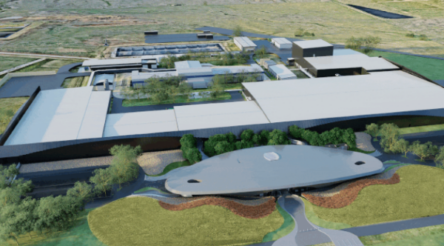Aussie hemp industry’s high ambitions

The global market for hemp is predicted to nearly quadruple in value between 2020 and 2027, reaching $US 18.6 billion.
This is according to an UNCTAD report released this week, also noting hemp’s hardiness across a wide range of climates, its ability to grow in and improve poor soil as well as absorb more carbon dioxide than any other crop, and that every part of the plant is useful.
Countries are starting to liberalise medicinal and industrial (containing a low percentage of the psychoactive chemical THC) hemp, and businesses are responding.
And what of Australia, which in 2017 became one of the last countries to legalise hemp for food?
We are off to a slow start, says Professor Gavin Ash, Executive Director of University of Southern Queensland’s Institute for Life Sciences and the Environment, and bid leader for the hemp CRC.
“…In North America and in Europe, there is a very large expansion in the industry, in both areas – in medicinal and in industrial. Whereas in Australia we’ve lagged a little bit behind that,” Ash tells us.
“Largely because of, probably, uncertainty generated by the legislation around hemp and its management in Australia. Not saying it’s too onerous, it’s just a little bit clunky and a little bit difficult for people to work with.
“And then coupled with that, because there’s been a moratorium on it for over 80 years, the research and development needed to underpin the industry has really lagged during that whole period. So we’ve got an opportunity now, in Australia and internationally, to build a hemp industry very quickly to become one of the top ten crops in rotation in Australia.”
Elsewhere the CRC has said that it hopes Australia can be growing over 100,000 hectares of the crop within a decade, from roughly 2,300 now.
According to Ash’s CRC, Australia has the “land, climate, resources and industry” to capitalise on the hemp era.
The CRC, which is hoping for a ten-year term, is considering the entire supply chain, as well as policy makers, local and national bodies, and end users.
Its four research themes take in production, uses of hemp for health and materials, and issues related to the long-term success of the industry, such as regulation and policy, public perception, and zero waste.
In this episode of @AuManufacturing Conversations with Brent Balinski, we hear from Ash as well as medical practitioner, author and former federal MP Professor Kerryn Phelps, the CRC’s Chair Elect, about the bid, which if successful will begin its work in the second half of next year.
Episode guide
0:30 – an introduction to the guests
1:03 – personal connection to hemp/cannabis. “A very exciting, future-focussed industry that [has] benefits across a range of industries.”
3:25 – Growing interest after the legalisation of cannabis and industrial hemp in 2016-17.
5:25 – The four research themes the CRC would focus on.
7:40 – Industry, university and other partners so far. And what has been interesting about roundtables held so far.
10:58 – Avoiding anything to do with recreational use. “That’s only one very small part of the overall story. So we’re looking at both high- and low-THC, but we’re looking at it from the perspective of medicinal and industrial uses.”
12:20 – Hemp has been a food and fibre crop for many, many years. It threatened other industries, such as cotton, and there was a backlash. That’s over now.
14:10 – Changing the economics of something that is currently grown in small volumes.
15:55 – Carbon credits could be part of the tipping point for this industry. “…$50 a tonne for carbon… changes the whole economics of growing hemp. It also changes what we can do with it, so that we do have the supply chains that could take some into textiles or paper and take others into carbon for buildings.”
17:52 – Closing remarks.
Picture credit: Nastco/iStock
Further reading
CULTIVATING A HEMP INDUSTRY IN AUSTRALIA
LOCAL CANNABIS MARKET BOOMING, BUT R&D BEING STIFLED: INDUSTRY
@aumanufacturing Sections
Analysis and Commentary Awards Defence Manufacturing News Podcast Technology Videos










